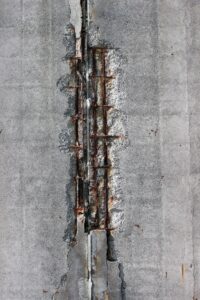In charge of theme 1 (WG1)
Benoit THAUVIN – CEREMA (benoit.thauvin@cerema.fr)
Christian CLERGUE – SIGMA concrete (christian.clergue@vicat.fr)
Two types of durability tests exist:

Durability tests constitute the base of the performantial approach of concrete durability. The objective of the national project is to have, for each exposure class of the concrete defined in the standard NF EN206-1, one or more indicators related to tests that allow to compare and/or to assess the capacity of a concrete to withstand a given degradation. To be legitimate and operational, these tests must have a robust technical repository which makes consensus (procedures, data fidelity modes, effect of concrete age) and that could be applied to the vast majority of used concrete at present and in the future. They must also be measured at intervals consistent with the constraints of construction, with limited test durations (less than 3 months) and test methods simple enough to be accessible to a large number of laboratories and economically acceptable. Working proposals for durability tests are therefore in an overall objective to make operational deployment of the performantial approach throughout all the stages of life of a concrete (specification, formulation, production and construction, controls, and ageing monitoring). The principle is to rely on work in progress and coming, to make it possible to emerge consensus and deepen the critical points and the gaps; and this in close contact with standardization groups (GEF8 and GEDUB especially), the national working groups (the AFGC including sustainability indicators database) and European (CEN, RILEM for example) work.
This ambition is available in several common objectives thant concerns all the types of aggressions:
Objective 1: Consolidate standard tests (or close to standard) to obtain a technical reference
The work will revolve for one hand around the analysis of campaigns of tests conducted recently at national, European or international levels (Chlortest, Grandube) and one the other hand around new round robin tests to consolidate procedures test (see objective 2) and dispose of precision data that are essential for the deployment of the performantial approach.
Objective 2: study some new protocoles to fill gaps, improve knwoledge and technical references
Project will focus first on certain phases of preconditioning tests that require clarification or adjustments. It will also address the effect of the concrete age on the test results. This is a major issue for the operational deployment of tests in order to frame and justify tests realized during production and construction controls and then during monitoring controls. It will also address the behaviour and response of modern concrete (concrete with CEM III, CEM V, high content additions, cement matrix with low carbonates,…) at these tests. This point is crucial since the performantial approach aims to promote forms of low environmental impact concretes and generally to contribute to the optimization of formulations. It will finally complete and refine possible correlations between indicators. He will lead ultimately to the establishment of consolidated procedures among which some will be the subjected of round robin tests (see objective 1).
Objective 3: Define a use frame of durability tests for evaluating durability of existing structures
The performantial approach should lead to the use of sustainable concrete resistant to attacks for which they have been prescribed. Durability testing to ensure upstream and under construction. These tests also allow to assess the durability of concretes of on-service structures. It is a major challenge for owners who need to know the state of their works and to anticipate their degradation to optimize their maintenance plans. Durability tests, realized in diagnostic phase in combination with other techniques, are essential tools to assess the ageing of service structures. Therefore, the work will focus on the choice of assessment criteria to define tests, sampling and sampling procedures and the possible adaptations of procedures. The terms of use of the tests results will also be identified . This work will be done in connection with the work on thresholds definition based on the assessment of a panel of existing structures. This will also be an opportunity to identify the links and complementaries with other methods of assessment of the concrete durability.
Objective 4: Improve use frame of durability tests to facilitate dissamination of the performantial approach
The panel of tests for the different attacks of the concrete is very broad. It includes accelerated ageing tests (e.g. accelerated carbonation test), evaluation of transfer properties tests (tests of migration or diffusion of chlorides, permeability) and characterization tests (porosity for example). Some tests allow to access to a specific property of a phenomenon (diffusion of chlorides for example) while others are more general (porosity, permeability). Finally, certain tests allow to classify the concrete together in an ‘absolute’ way while others allow a relative ranking. For some tests, the results may also be defined as durability indicators (general or of substitution). In order to improve the readability and facilitate the dissemination and appropriation of the performantial approach, a work of terminology and classification of tests is needed. A classification depending on the nature of the result and its possible use may be considered.
